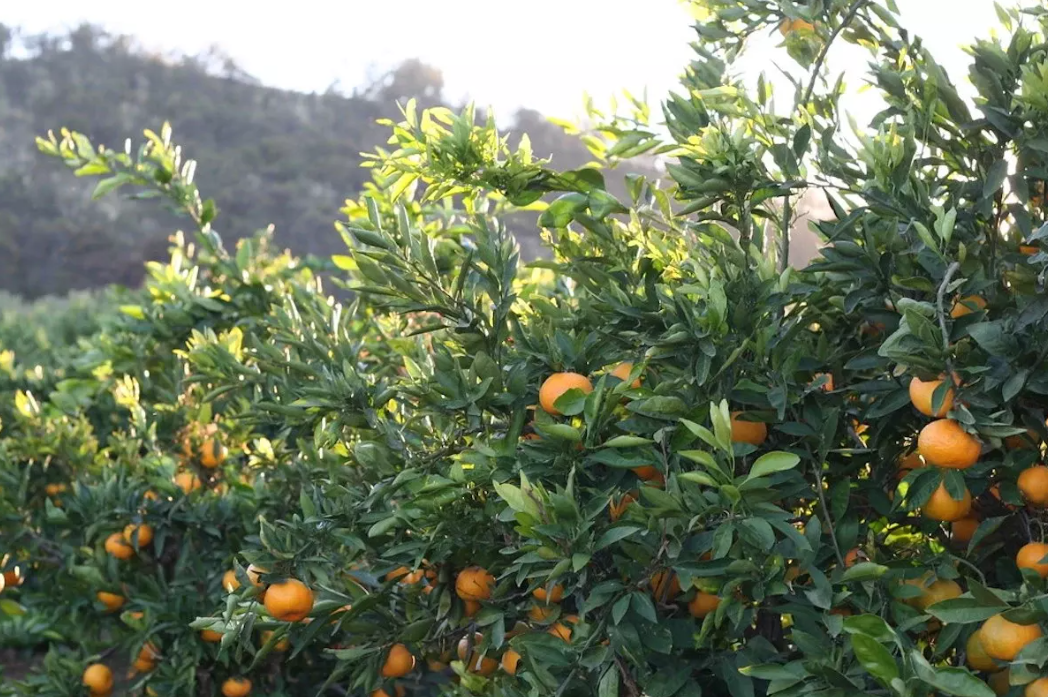Product Description
Production Method
By steam distillation of the fresh leaves, twigs, and/or fronds of the Mandarin tree to obtain the oil. The oil distills out of the distilling still in two fractions: a heavier and a lighter than water fractions. PGM oil is the complete oil associating these two fractions.
Uses
In perfumery, used as a powerful fragrance component in soaps, detergents, cosmetics, and perfumes. In Flavors, bulk usage is directed at fractionating Dimethylanthranilate (DMA) from the oil (where it is present at ~50% levels) for uses as a major flavoring agent in food, alcoholic and soft drinks requiring a « concord grape » effect. “The natural oil is interesting in strawberry, blueberry, mandarin, and orange flavors.” Wright, J. “Flavor Creation” (2004). In Aromatherapy, the oil is used for its “powerful antispasmodic, calming properties to treat insomnia, anxiety and stress aftermath.” (Franchomme, P.; Jollois, R.; Pénoël, D. “L’Aromathérapie Exactement” (2001).
Botanical Origin & Historiography
Native to Southern China and Northeast India. For the past 30+ years, Egypt has become the main producer of Petitgrain Mandarin (PGM) oil (see also below Petitgrain Bigarade oil for more etymology). Citrus reticulata is from Latin, where reticulata means “netted” (referring to the network of white pith threads between the peel and the fruit endocarp). The name mandarin orange is a calque of Swedish mandarin apelsin [apelsin from German Apfelsine (Apfel + Sina) meaning Chinese apple], first attested in the 18th century. The form “mandarine” derives from the French name for this fruit. The reason for the epithet “mandarin” is not clear; it may relate to the yellow color of some robes worn by mandarin dignitaries. Citrus reticulata is a moderate-sized tree which can grow to some 7 meters in height. The tree trunk and major branches have thorns. The leaves are shiny, green, and rather small. PGM oil is produced by distilling the leaves, twigs, and fronds yielding a very powerful oil, particularly rich in Dimethylanthranilate (DMA) – a concord grape flavored component present in the oil at levels ca. ~50%. The market is mostly interested in the oil to fractionate the DMA from it which can be broken down further to Methylanthranilate. Methylanthranilate is used for the flavor of grape Kool-Aid. It is used for flavoring of candy, soft drinks (e.g. grape soda), fruit (e.g. Grāpples), chewing gum, drugs, and nicotine products. It also acts as a bird repellent and as it is food-grade it can be used to protect corn, sunflowers, rice, fruit, and golf courses (sic!). DMA has a similar effect. Methylanthranilate, natural and synthesized, is used extensively in modern perfumery. It is also used to produce Schiff bases with aldehydes, many of which are also used in perfumery. In a perfumery context the most common Schiff’s Base is known as aurantiol, produced by combining Methylanthranilate and Hydroxycitronellal. It is also a primary component of the essential apple flavor, along with ethyl acetate and ethyl butyrate. Methylanthranilate naturally occurs in Concord grapes whereby the distinct “grapey” flavor of the material peculiarly hailing from the Mandarin tree. It is found in much smaller proportions in bergamot, black locust, champak, gardenia, jasmine, lemon, neroli, oranges, rue oil, strawberry, tuberose, wisteria, galangal, and ylang-ylang. The 100% pure and natural origin of Methylanthranilate from Petitgrain Mandarin oil (rather than from synthetic origins) is what the industry values in it.
